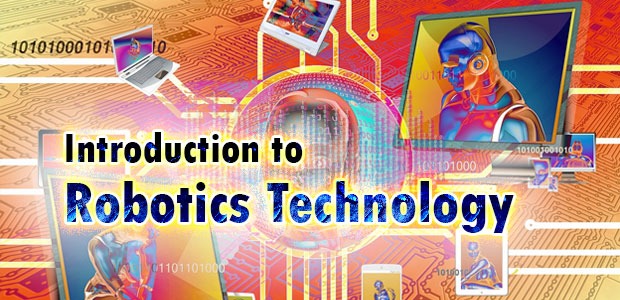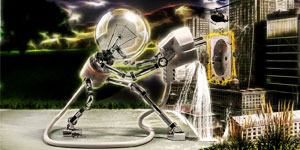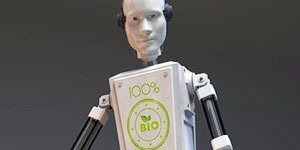For a very long time, humans dreamt about autonomous and compliant machines capable of carrying out difficult jobs. At the end of the twentieth century, that dream started translating into reality. Robots have proven themselves to be excellent substitutes for humans to perform repetitive tasks that do not require improvisational ability. There are already numerous robots working in mines and oil excavations, manufacturing consumer goods in assembly lines, exploring space and fighting in wars.
The North America manufacturing companies represented by the Robotic Industries Association (RIA), which make up 90% of the US robotics industry, sold a total of 11,384 industrial robots valued at $745.1 million during the first nine months of 2004, 13% more than the previous year. Jumping forward to 2016 those numbers jumped to 30,875 and $1.8 billion dollars and is expected to grow rapidly in the coming years.
What is Robotics?
The word robot comes from ‘Robotnik’ or ‘robota.’ It was first used in 1917 by the Czechoslovak playwright, Karel Capek in his work Opilek. However, it was the writer, Isaac Asimov who popularized the concept with his many stories of science fiction, endowing robots with a romantic theme of which these objects, in fact, lack.Robotics is, therefore, the science or branch of science that deals with the study, development, and applications of robots.
The three famous laws of robotics according to Asimov:
- A robot cannot hurt or allow any human being to be hurt.
- A robot must obey all orders given humans, except they conflict with the first law.
- A robot must protect its ownexistence unless it conflicts with the first two laws.
Another definition of robotics is the design, manufacture, and use of programmable automatic machines to perform repetitive tasks such as assembly of automobiles, appliances, and other activities. Robotics deals with everything concerning robots, which includes the control of motors, automatic pneumatic mechanisms, sensors, computer systems, etc.
Robotics has two primary aspects: theoretical and practical. The theoretical aspect combines the contributions of automation, computer science and artificial intelligence (AI). On the practical or technological side, there are different branches of development which includes construction (mechanical, electronic) and management (control, programming).
 What is a Robot?
What is a Robot?
By definition,a robot is a multi-functional and reprogrammable manipulator, designed to move materials, parts, tools or special devices, through programmed and variable movements that allow carrying out various tasks.
There is a wide variety of robots, which makes it very difficult to specify componentsthat are common to all.In general, most have a skeleton, which can be internal or external, motors, parts that allow their mobility, gripping systems, and manipulation, and a power supply which is usually electric.
Application of Robots
There are many jobs that people do not like to do, either because they are boring or dangerous or extremely difficult. The most practical solutionthroughout history was to force someone to do the work. This was done through slavery and other forced methods of labor.
Todayrobots are ideal for jobs that require repetitive and precise movements. One of the advantages robots have for businesses is that humans need breaks, wages, food, sleep, and a safe area to work, but this is not the case for robots. The fatigue and boredom of humans directly affect the production of a company; robots never get bored so their work will be the same when the company opens at 8:00 AM until it closes at 6:00 PM or perhaps doesn’t close at all now.
A good example of this is the car industry. Automotive companies are so highly automated that most humans monitor or maintain robots and other machines versus actually building cars.
Another type of work for a robot is to move, divide, deliver, etc. in food factories. For example, in a chocolate factory, robots carry the boxes of chocolates from one area to another.
 Robotics and Artificial Intelligence (AI)
Robotics and Artificial Intelligence (AI)
Artificial intelligence is a field primarily concerned with the creation of intelligent machines that perform tasks in “human like” ways. In the beginning, theemphasis of AIwas placed on tasks such as games and theorems. However, the field of AIquickly advanced to try and tackle a broader set of challenges.
Today Artificial intelligence studiesfocus on a very important problems such as understanding natural language and human reasoning. However, the success of AI today is primarily based on the creation of expert systems (a software that uses databases of expert knowledge to make decisions or offer advice in a professional area).But AI hasn’t yet made the leap to human concepts such as empathy and “common sense”.
Combining robotics with Artificial intelligence has a unique common purpose to create machines that can work and make decisions on their own similar tohumans. AI has application in Robotics when it is required that a robot “think” and make a decision between two or more options by assessing relevant data. AI is also applied to non-robotic devices which is typically some type of computer system. Its primary application is to develop computer programs that solve problems involving the interaction between the machine and man and continue to learn, develop and improve.
With respect to the social and cultural environment, both robotics and artificial intelligence are generally aimed atproviding benefitshumanity. Both technologies enrich the world today because they enhance our daily lives through improved productivity, cheaper consumer goods, improved well-being through better health care and reducing exposure to dangerous environments.
There is a great advancement in fields of robotics and artificial intelligence which is integrating multiple sciences to create a machine that can “think.”Specifically, the integration of AI with robotics has thebasic purpose of assisting humanity through language interpretation, data analysis, task automation, visual assessment and more. The future will be fascinating to watch unfold as these technologies continue to advance.


 What is a Robot?
What is a Robot? Robotics and Artificial Intelligence (AI)
Robotics and Artificial Intelligence (AI)